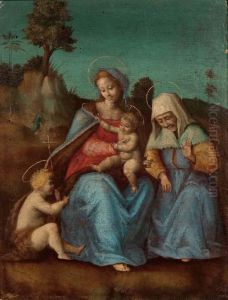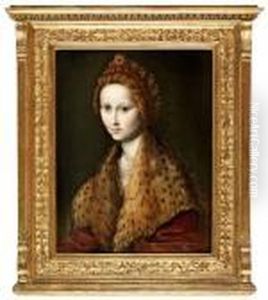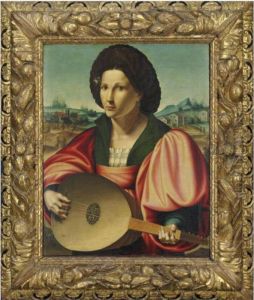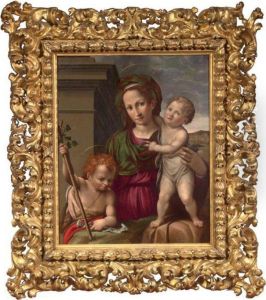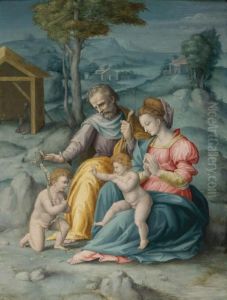Francesco Ubertini Bacciacca Paintings
Francesco Ubertini, known as Il Bacchiacca, was an Italian painter of the Renaissance period. Born in 1494 in Florence, he was a contemporary of some of the most illustrious artists of the time, such as Michelangelo and Raphael. Bacchiacca was known for his versatility and the integration of diverse influences in his work, including elements from the Northern Renaissance, which was somewhat unusual for Italian artists of his time.
Bacchiacca's early training is not thoroughly documented, but it is believed that he was an apprentice in the workshop of Perugino, who was another key figure of the Renaissance and the teacher of Raphael. Bacchiacca's style, however, was also influenced by other artists such as Andrea del Sarto and Jacopo Pontormo, with whom he was associated in Florence.
Throughout his career, Bacchiacca worked on various commissions that showcased his adaptability as an artist. He was skilled in creating altarpieces, portraits, and mythological scenes. One of his most notable contributions was a series of panels with scenes from the life of Joseph, which were originally part of a bedchamber in the Palazzo Borgherini in Florence. These panels illustrate Bacchiacca's ability to weave intricate narratives with clarity and decorative elegance.
Bacchiacca's work was characterized by his elaborate compositions, rich color palette, and detailed depiction of figures and animals, often set against a background of lush landscapes. He was particularly adept at integrating a variety of animal species into his works, a skill that not only reflected his interest in the natural world but also served as a symbolic element within the narratives he painted.
Despite his considerable talent, Bacchiacca did not achieve the same level of fame as some of his contemporaries. However, his oeuvre has been appreciated for its unique blend of Florentine and Northern Renaissance elements. Bacchiacca continued to work in Florence until his death in 1557. His legacy is preserved in the collections of major museums around the world, where his paintings continue to be studied and admired for their contribution to the tapestry of Renaissance art.
